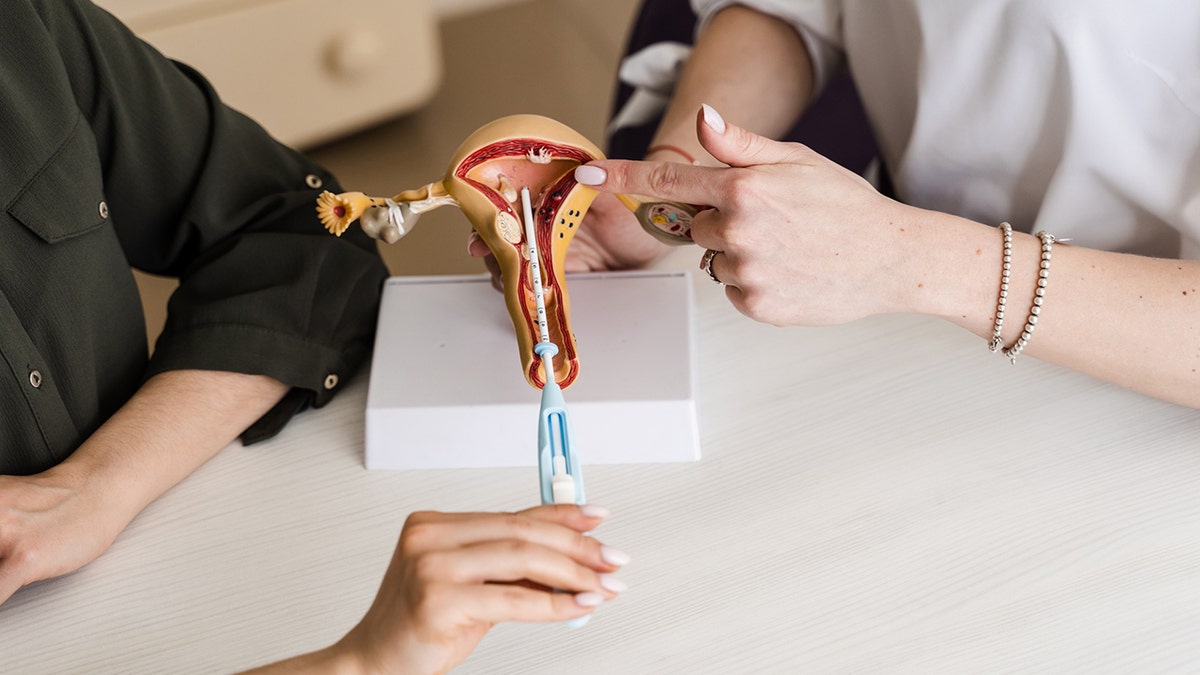Having an IUD (intrauterine device) inserted for birth control is known to be potentially painful.
The U.S. Centers for Disease Control and Prevention (CDC) is now recommending pain management protocols for the procedure.
Women on social media have documented their discomfort, with some TikTok users posting videos of themselves in visible pain while lying on a doctor’s table.
JD VANCE PROMOTES FAMILY IN AMERICA AMID BIRTH RATE DROP, FUELED BY SEVERAL FACTORS
One user, Sarah Warren, shared that she took ibuprofen an hour before her appointment as suggested by her doctor, but that the procedure was still painful.
“I almost passed out, not going to lie,” she said. “There needs to be better pain management for IUD insertion.”

“There needs to be better pain management for IUD insertion,” wrote one woman (not pictured) on social media. (iStock)
In a 2014 study published in the journal Contraception, health care providers were found to underestimate patients’ pain during IUD insertion.
On a 100-mm pain scale, patients in the study ranked their maximum pain at 64.8 mm, while providers rated it at 35.3 mm.
New guidance for pain relief
Following a persistent call for change from patients and doctors, the CDC released new guidance in its U.S. Selected Practice Recommendations for Contraceptive Use, 2024.
SOME TAMPON PRODUCTS FOUND TO CONTAIN TOXIC METALS IN FIRST-TIME STUDY
The agency suggested that all patients should be counseled on the potential pain before the appointment, as well as on the risks, benefits and alternative options for pain management.
“When considering patient pain, it is important to recognize that the experience of pain is individualized and might be influenced by previous experiences, including trauma and mental health conditions, such as depression or anxiety,” the guidance reads.

The IUD is inserted through the opening of the cervix and into the uterus. (iStock)
Evidence suggests that using lidocaine as a local anesthetic — or using a topical gel, cream or spray — could help reduce patient pain, according to the agency.
The notice also listed misoprostol as a medication used by some providers to help soften the cervix before IUD insertion.
The CDC also mentioned a variety of alternative options, like NSAIDs, smooth muscle relaxants and analgesics, although the evidence for pain reduction is limited.
ENDOMETRIAL CANCER PATIENTS SEE NEW HOPE AS FDA APPROVES ‘TRANSFORMING’ IMMUNOTHERAPY DRUG
Dr. Meleen Chuang, chief of obstetrics and gynecology at NYU Langone Hospital Brooklyn, reflected on this guidance in a statement sent to Fox News Digital.
“Many OB/GYNs have already been doing these interventions for years,” she said. “It is welcoming to see the CDC reflect the updates for guidance in accordance to our care delivery.”

“It is welcoming to see the CDC reflect the updates for guidance in accordance to our care delivery,” said one OB/GYN (not pictured). (iStock)
Using pain relief methods like lidocaine to numb the cervix or taking medications such as acetaminophen and NSAIDs can help with reducing this discomfort, according to Chuang.
Other non-invasive pain relief methods can include using a heating pad on the patient’s belly, the doctor said.
In addition to pain management, Chuang said her patients often find comfort in being “talked through” the procedure by their doctors.

Taking medications like acetaminophen and other NSAIDs can help with reducing IUD insertion discomfort, according to an OB/GYN. (iStock)
“The communication of what to expect before and during the procedure helps with the overall experience and alleviates any anxieties,” she said.
CLICK HERE TO SIGN UP FOR OUR HEALTH NEWSLETTER
“These are very easy things we commonly do for patients, as well as being fast/efficient in placing the IUDS, [to] make the experience much more acceptable.”

“The procedure for placement for IUD should take no more than two to three minutes in experienced hands,” an OB/GYN said. (iStock)
“We want what is best for our patients, and if there is fear or concern [about] pain … we are obligated to help our patients feel supported and at ease,” Chuang added.
For more Health articles, visit www.foxnews/health
IUDs are more than 99% effective in preventing pregnancy, according to Yale Medicine.
CLICK HERE TO GET THE FOX NEWS APP
Fox News Digital reached out to the CDC for further comment.






